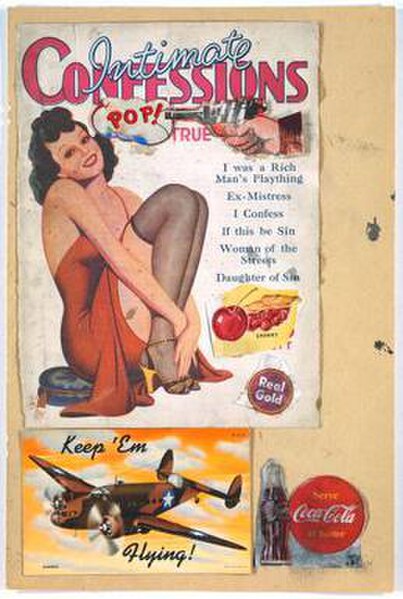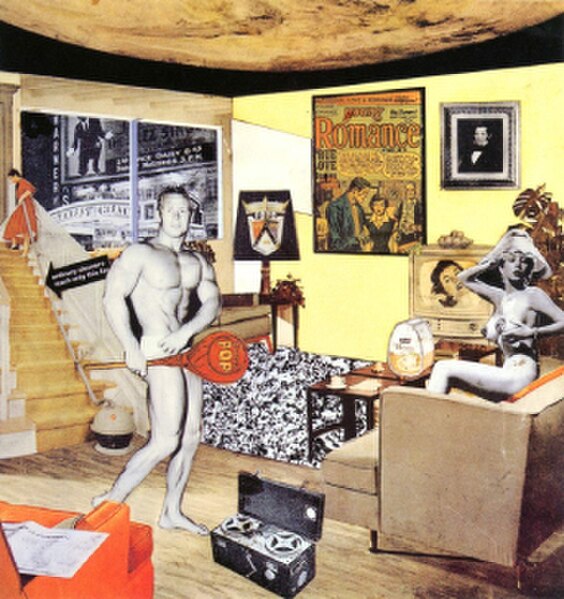Billy Apple was a New Zealand artist, whose work is associated with the London, Auckland and New York schools of pop art in the 1960s and NY's Conceptual Art movement in the 1970s. He worked alongside artists like Andy Warhol and David Hockney before opening the second of the seven New York Not-for-Profit spaces in 1969. His work is held in the permanent collections of Tate Britain, Scottish National Gallery of Modern Art, Philadelphia Museum of Art, Guggenheim Museum, Chrysler Museum of Art, Detroit Institute of Arts, National Gallery of Australia, Te Papa, Auckland Art Gallery, the Christchurch Art Gallery, the University of Auckland, and the Stedelijk Museum voor Actuele Kunst in Belgium.
Apple in 2018
Apple circa 1993, at an Art for AIDS function
The Corner Post (2011), a sculpture by Billy Apple installed outside Eden Park
Pop art is an art movement that emerged in the United Kingdom and the United States during the mid- to late-1950s. The movement presented a challenge to traditions of fine art by including imagery from popular and mass culture, such as advertising, comic books and mundane mass-produced objects. One of its aims is to use images of popular culture in art, emphasizing the banal or kitschy elements of any culture, most often through the use of irony. It is also associated with the artists' use of mechanical means of reproduction or rendering techniques. In pop art, material is sometimes visually removed from its known context, isolated, or combined with unrelated material.
Eduardo Paolozzi, I was a Rich Man's Plaything (1947). Part of his Bunk! series, this is considered the initial bearer of "pop art" and the first to display the word "pop".
Andy Warhol, Campbell's Tomato Juice Box, 1964. Synthetic polymer paint and silkscreen ink on wood, 10 inches × 19 inches × 9½ inches (25.4 × 48.3 × 24.1 cm), Museum of Modern Art, New York City
Charles Demuth, I Saw the Figure 5 in Gold 1928, collection of the Metropolitan Museum of Art, New York City
Richard Hamilton's collage Just what is it that makes today's homes so different, so appealing? (1956) is one of the earliest works to be considered "pop art".







